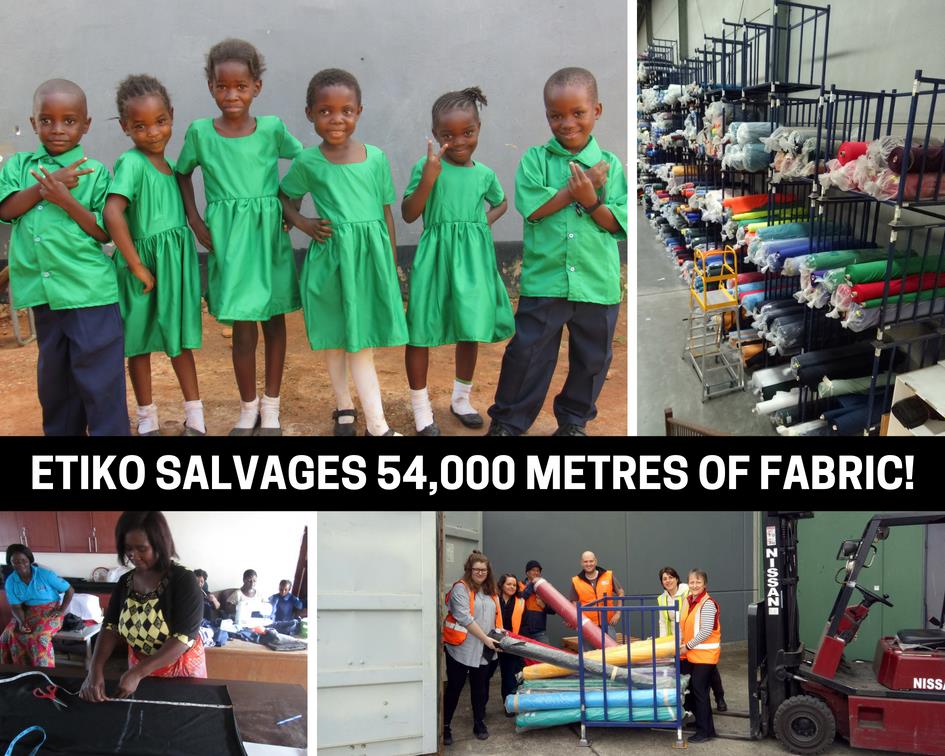It’s no secret that waste is a huge problem for the global fashion industry. The global fashion industry is the second biggest polluting industry in the world behind fossil fuels, and in Australia alone more than 500,000 tons of fabric ends up in landfill each year. That amount is made up of old clothing, but also untouched fabric that companies haven’t used. In these circumstances the fabric is in perfect condition and can still be used, if someone can rescue it before it heads to landfill.
In the middle of 2017, on the same day as the ABC’s War on Waste program highlighted the enormous amount of waste created by the fashion industry in Australia - around 6,000 kilograms of fabric thrown away every 10 minutes - Etiko took delivery of 54,000 metres of fabric that another fashion brand, which was closing its Australian operation, had planned to send to landfill. They were going to dump perfectly good fabric, much of it still wrapped in its original packaging. Over the years other brands have asked us to take their fabric. Sometimes it’s possible, but not always. We also know that some brands burn their fabric rather than dispose of it, so that their designs and patterns can’t be copied. Last year H&M were accused by Danish journalists of burning wearable garments, although the company denies the allegation.
So what did we do with our 54,000 metres of fabric? First, we on-sold some of it so as to fund our work here at Etiko. Second, we donated to groups that were training refugees in the art of sewing and clothing construction. We then gave odds and ends to Boomerang Bags, which is an organisation of community groups around Australia. The local branches make shopping bags out of fabric, in an attempt to reduce the amount of plastic bag used around the country. The small amount of fabric that was unusable we donated to animal shelters for use as rags.
The majority, approximately 30,000m of fabric, was donated to World Vision which they used for social enterprise projects in Africa. World Vision recently informed us that the fabric is being put to excellent use.
“The fabric has been used in Zambia, in a partnership between World Vision Zambia and a local organisation called Needs Care,” a representative told us. “The fabric is being used in a women’s empowerment program to help them with their tailoring skills for income generation for the group.”
The group is “very excited” to be making their way through the donated fabric, which is allowing them to design and sew new bed covers, mattress covers, skirts and dresses. The fabric is also being used to make hygiene pads for girls in schools in World Vision Area Development Program called ‘Chongwe Cluster’.
Reducing waste is something every clothing label can do to help reduce the overall pollution caused by the global fashion industry. Whether it’s by improving efficiencies in manufacturing or reusing fabric, these are measures that are easy to implement.
Fabric Salvation


Leave a comment